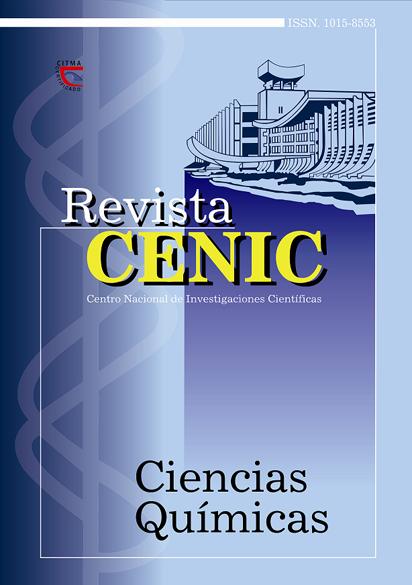Ensayo climático costero natural para diferentes estructuras de aluminio lacado y anodizado
Abstract
It is well-known that the geographical situation of the station of natural assays of Cojímar, located in the
City of Havana in Cuba, and the variation of their environmental conditions with the time, provoque an important influence
in the behavior of many metals, especially, the aluminum and the anodized and lacquered systems. The present
study had the purpose of evaluate the resistance capacity that different variants of structures of anodized and lacquered
aluminum of different origins, under the conditions of natural assays. The coupons, obtained through different anodized
and lacquered technologies, were exposed at the coastal marine atmosphere of the assay station of Cojímar, located in the
north coast of Havana City. The coupons were carefully observed at simple sight and with a small increase, after several
months of exhibition and the thickness of their anodized and lacquered coat were measured before and after the assays.
The gloss of the surfaces was also determined before and after the rehearsal. Bigger affectations were observed in lacquered
coupons. The importance of the thickness of the protective layer and their impermeabilization grade in the
protection capacity of the applied protection system on the aluminum was estabished, as well as the grade of powder
retention of the coupons during the experiment. Among the lacquered coupons, those of darker tones exhibit bigger
resistance and the anodized coupons experience smaller loss of thickness during the assays. It was observed a rigth
correspondence between the losses of gloss and the visual observation of the coupons.
Downloads
Published
How to Cite
Issue
Section
License

This work is licensed under a Creative Commons Attribution-NonCommercial-ShareAlike 4.0 International License.
Los autores que publican en esta revista están de acuerdo con los siguientes términos:
Los autores conservan los derechos de autor y garantizan a la revista el derecho de ser la primera publicación del trabajo al igual que licenciado bajo una Creative Commons Atribución-NoComercial-CompartirIgual 4.0 que permite a otros compartir el trabajo con un reconocimiento de la autoría del trabajo y la publicación inicial en esta revista.
Los autores pueden establecer por separado acuerdos adicionales para la distribución no exclusiva de la versión de la obra publicada en la revista (por ejemplo, situarlo en un repositorio institucional o publicarlo en un libro), con un reconocimiento de su publicación inicial en esta revista.
Se permite y se anima a los autores a difundir sus trabajos electrónicamente (por ejemplo, en repositorios institucionales o en su propio sitio web) antes y durante el proceso de envío, ya que puede dar lugar a intercambios productivos, así como a una citación más temprana y mayor de los trabajos publicados (Véase The Effect of Open Access) (en inglés).














